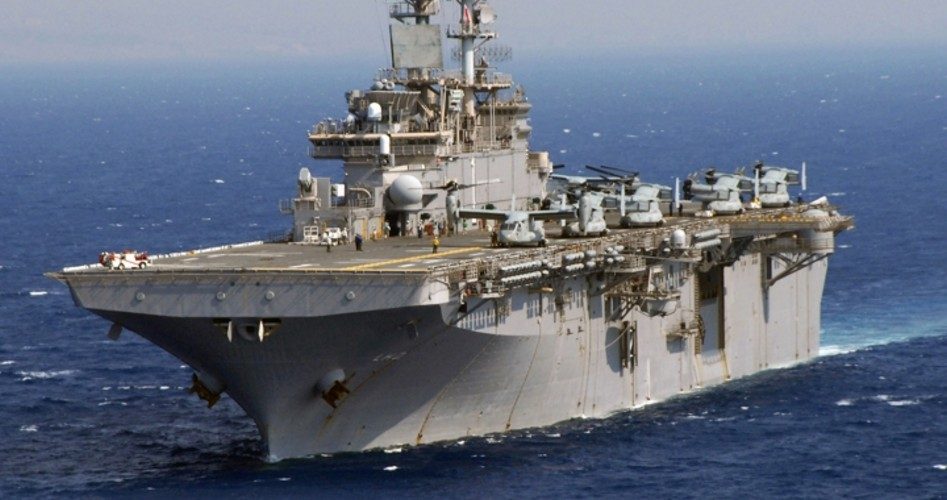
The USS Wasp, an amphibious assault ship carrying helicopters and F-35B short take-off and vertical-landing (STOVL) fighter jets, was recently spotted in waters “near the Scarborough Shoal,” the Philippines’ ABS-CBN News reported on April 9.
Scarborough Shoal, which is also claimed by Taiwan, was seized by China in 2012 after an extended standoff with the Philippines.
Bloomberg reported that the Wasp joined the annual joint Exercise Balikatan with the Philippines this month. The Wasp didn’t pass within 25 nautical miles of the shoal, according to a U.S. defense official who spoke on the condition of anonymity. The distance suggests that the ship wasn’t conducting a so-called freedom of navigation operation, a practice that the United States uses to assert international sailing rights within 12 nautical miles of countries’ shores.
Chinese Foreign Ministry spokesman Lu Kang said at a briefing in Beijing on April 10 that he hopes “non-regional forces don’t stir up troubles in the South China Sea.”
This is not the first time U.S. ships or planes have entered the area in defiance of China’s claim over Scarborough Shoal. In January 2018, the U.S. destroyer USS Hopper conducted a Freedom of Navigation Patrol, or FONOP, near the shoal. In April 2016, U.S. Air Force A-10 “Warthog” ground attack aircraft on a rotational deployment to the Philippines also flew over the contested area. Both times, China protested that the United States had violated its sovereignty.
Scarborough Shoal lies at the northeast corner of what some consider to be China’s potential “strategic triangle” that would give China control of the South China Sea. The other strategic points are Woody Island to the northwest, and various sites in the Spratly islands to the South.
In 2015, the U.S. Navy flew P8-A Poseidon surveillance aircraft over seven artificial islands the Chinese were building in the disputed Spratly islands to gather intelligence about the Chinese activities. The P8-A Poseidon, in addition to carrying highly sophisticated electronic surveillance equipment, also carries torpedoes, depth charges, SLAM-ER missiles, Harpoon anti-ship missiles, and other weapons for use in anti-submarine and anti-surface vessel warfare.
After a P-8A flew over the Chinese construction zone, the Chinese Navy contacted the plane by radio and asked it to leave the area.
An article in Britain’s Telegraph on May 22, 2015, reported that China was “strongly dissatisfied” with the U.S. flights over its island construction sites.
We reported back in 2015 that an editorial in The Global Times (a newspaper owned by the Chinese Communist Party’s People’s Daily) said that “U.S.-China war is inevitable in the South China Sea … if the United States’ bottom line is that China has to halt its activities” in the disputed Spratly Islands, which China calls the Nansha Islands. As with other disputed islands in the South China Sea, multiple nations presently have claims to the Spratly Islands, including Brunei, mainland (Communist) China, Malaysia, the Philippines, the Republic of China (Taiwan), and Vietnam.
Photo of USS Wasp: navy.mil
Related articles:
Philippines’ President Duterte Tells China to “Lay Off” Thitu Island
U.S. and Chinese Carrier Groups Simultaneously Patrol South China Sea
U.S.-China War “Inevitable” If U.S. Continues Flights Over Claimed Islands


